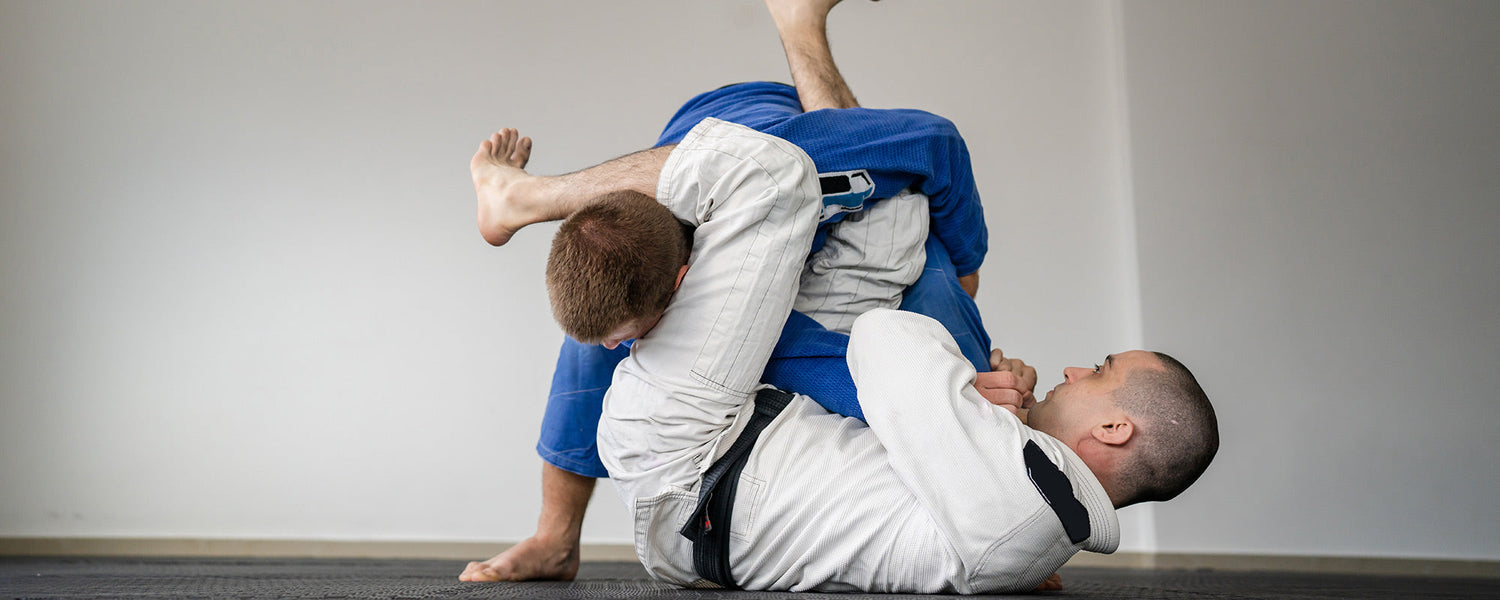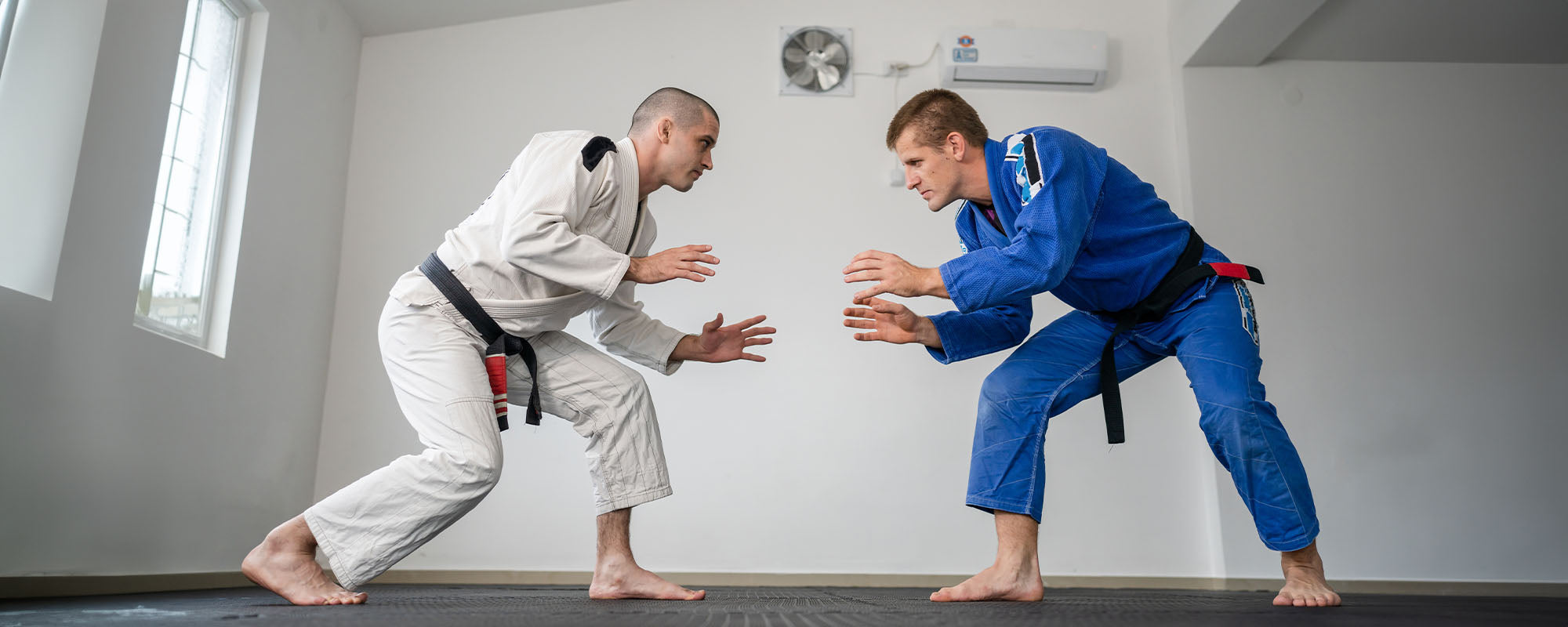To keep improving and become competitive enough in sparring and tournaments, Brazilian jiu-jitsu teaches numerous techniques and methods. Among these techniques, the tripod pass is a technique that is gaining popularity in today’s No-Gi as it is such a great and simple technique that one can pass to side control or even directly to the mount.
This allows the user to relatively easily bring the opponent down into the standing position, thus allowing one to get around functionally and through the opponent’s guard. This article recognizes the tripod pass as a passing technique, which we advise you to include in your game.
Table of content
1. Tripod Guard Pass
The tripod guard pass is an exciting technique in which one goes over the opponent, playing with their legs to pass the guard and attain a dominant top position. The term "tripod" refers to a position that forms a stable base while executing it; it usually comprises two feet, sometimes a knee, and a very stable three-point contact with the mat.
There are a few variations of this tripod pass. While some variations are for a more aggressive, dynamic style of performance, the modern version mainly works in camps and to force the opponent into constant defense. This pass is useful against many different guard styles, making it versatile for any grappler's arsenal. Therefore, it works not only on passing the guard but also on more subsequent set-ups in the offense.
2. Mechanism of BJJ Tripod Guard Pass
Tripod pass is a preliminary method most rising jiu-jitsu fighters adopt. Most technical No-Gi practitioners worldwide are known for their analytical perspectives on this sport.
It is important to notice a couple of critical steps while executing a tripod pass. First, the fighter needs to force the opponent to his back. This is the first and most important step.
This position eliminates many options for counter-attacks from the bottom. Most experts use an underhook and head block combination because this setup creates space and forces the elbows away from the body.
The method of distributing the weight on the three base points was a unique term. Pressure is maintained over the leg and two arms. The fighter uses one leg to break the opponent's posture and pass the guard.
The placement of the head over the shoulder creates pressure over the torso that eventually pins the opponent in place. Moreover, it provides the highest percentage, as most grapplers are unaware of defending tripod guard passes.
The initial steps to pass the guard look like the body lock pass, but you will not need to lock your hands. Another critical difference in the tripod-style method of passing is that you work more on the leg rather than smashing your way in.
The fighter can use the drilling method, which involves the motion of the two legs. These two are essential ingredients for getting your guard passing the game down. From here, when the practitioner has pummeled out and cleared both legs, he can immediately transition right into a dominant position, such as side control or the mount.
3. Origin of BJJ Tripod Pass
The Tripod Pass is one of the first classic techniques in BJJ that has evolved many times. Popularized by world-class competitors during the early 2000s, it has become a staple for many practitioners because it is effective and easy to learn.
Tripod passing guard techniques are a result of the method's evolution. They specifically work on the dynamics of undercooking the opponent in place and then executing the proper weight over the opponent.
Creating a stable base usually involves two feet and knees working to control and pass on to the opponent's guard. It has been modified to include various forms.
More contemporary variations include stronger movements and modifications that can help deflect different guard types. Indeed, multi-dimensional moves are basic in BJJ training and competition.
4. Execution of the Tripod Passing

BJJ tripod passing is the technical method, and it is considered one of the toughest guard passing methods. The tripod guard passing technique is in use by the top BJJ grapplers. Once you execute the method properly, it will act as the most unexpected guard-passing method for your opponent. Let us find out the step-by-step guide to applying the BJJ tripod guard passing technique.
This technique helps the fighter to reach the upper body of the opponent after passing the legs, which requires special tricks and methods.
4.1. Target the Upper Body with an Underhook
The opponent is in the sitting position, and the fighter needs to approach his upper body. The first step is to create an underhook: Take the hand under the opponent's armpit and keep the hand at the back.
Keep one knee on the floor to maintain the grip on the ground.
4.2. Place the Head Over the Shoulder
The next step is to keep the head over the opposite shoulder. The hand should be at the opponent's triceps.
4.3. Apply the Pressure
The fighter will apply the pressure over the shoulder so that the opponent will get on the mat. Place one hand on the floor to maintain the position.
4.4. Passing the Legs
Passing the legs is one of the most important steps that requires vigilance. The hand that is at the back is dragged to the side of the arm. Meanwhile, the legs are over the opponent's legs. The arms are extended in a straight direction.
4.5. One Leg Movement
The fighter will use the same side leg where the hook was created. Move the leg upward, keeping it along with the knee. Pressure is applied to the side to bend the legs in one direction.
The foot is kept over the ankle, and then the knee is placed on the mat either on the same side or could be taken to the opposite side.
4.6. Create An Underhook
The fighter needs to keep the arm parallel to the ribs over the ribs. The fighter will come to the mount or side mount position. In this way, they have passed the guard in a unique way.
5. Advice to Apply the Tripod Guard
The tripod guard pass is not a simple method; it requires regular practice. Below are a few pieces of advice that will help you learn tripod guard passing.

6. Frequently Asked Questions (FAQs)
6.1. Why is a Tripod Passing Guard Considered Important?
Guard passing is one of the important aspects of Brazilian Jiu-Jitsu, and it is one position where one has to go through several years of mistakes. To put it more simply, guard passing means shifting the body over an opponent’s frames, such as arms or legs, to gain control of his body in more advantageous positions like side control, mount, knee on belly, north-south, etc.
It is evident that adroit practitioners may exercise a range of guard passing tutorials. A sportsman’s favorite guard passing strategies show how they prefer to fight against a non-cooperative opponent. While this is very much chosen according to the individual, we could also identify a few mandatory guard passing techniques.
6.2. How is a Tripod guard pass regarded as a difficult method to escape from?

The fighter places the head's weight over the torso, which pins the opponent in place. Moreover, it restricts movement, and they are unable to move their upper body. The opponent feels the pressure and can not escape from the tripod guard pass.
6.3. How to defend from tripod BJJ?
Tripod guard passing is the most challenging position, but this could be defended with the following method:
- Prevent the opponent from placing the head over the shoulder.
- Create the frame of the arms to restrict the action.
- Focus on the grips and attacks of the opponent. For that purpose, you need to stay super active.
- Maintain the distance. Use the movement of the legs and arms to do so.
- Do the practice to increase or enhance the reaction time.
6.4. Who are the expert grapplers of Tripod guard passing?
Tripod guard pass BJJ is a comparatively tough method that requires special attention. A BJJ grappler can apply this method after the proper training and drilling. The following experts grapplers are proficient in the execution of the tripod guard pass, sweeps, and even at its variations.
- Jozef Chen
- Gustavo Gasperin
- Travis Steves
7. Final Words
The art of the Brazilian jiu-jitsu is based on the important factors that include the sweeps , takedowns , and submissions. It is not as simple as it seems to be. The fighter needs to break the guard position by passing it, which can be done in a variety of ways.
The tripod guard passing technique is a powerful tool in the BJJ arsenal. It is a bit of a complicated task that requires dedication and determination. The fighter needs to maintain the leverage, and the pressure is applied over the shoulder, knee, or ankle in order to pass the guard.
It requires a strategic application that also involves the execution of the underhook. After the incorporation of the tripod guard passes, the fighter can increase their level of performance and can dominate in the BJJ bouts.











Leave a comment
This site is protected by hCaptcha and the hCaptcha Privacy Policy and Terms of Service apply.